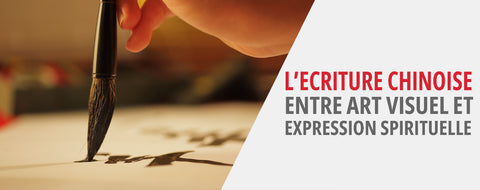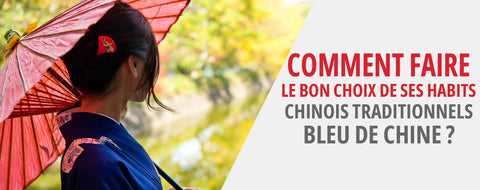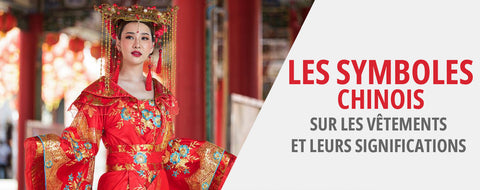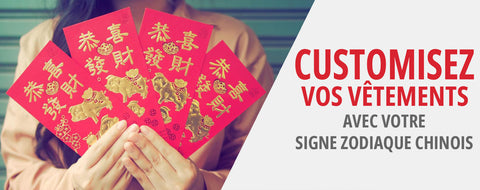
All about the Chinese dress qipao
of reading - words
The Chinese Qipao dress is a must of modern Chinese fashion. However, the origin and history of Qipao are surrounded by mysteries and many myths.
Qipao or Cheongsam?
Chinese qipao is sometimes also called Cheongsam, but we use the first in French more often. The term Cheongsam is actually an English word: a romanization of the Cantonian word 衫, Chèuhngsam. This word is commonly used to describe this adjusted Chinese dress which is particularly popular in Shanghai. In the Chinese Shanghai dialect, the term zansae is commonly used to describe the same dress.
Qípáo, on the other hand, is a Mandarin word. The use of these two terms can therefore vary depending on the place. In Hong Kong, for example, the term Cheongsam or Chèuhngsam is now used as a mixed term Referring to the two genres and can therefore designate both the traditional clothes of men and those of women! In China, qipao exclusively designates the female version clothing. In Western countries, the terms Cheongsam and Qipao also designate only female clothing.

The story of the Chinese dress qipao
Historical context
The history of Qipao began at the time of the Qing dynasty, the last imperial dynasty of China, which reigned between 1636 and 1911. It was at this time that the Manchu people reigned over China. THE Mancho used an administrative system called Eight banners which was established by chief Nurhachi, who reigned between 1559 and 1626. In this system, the Manchu people wore clothes different from those of other peoples and in particular Han and oppressed Mongols.
The Manchu people wore long dresses called changpao (袍) For men and women, although the term qipao was also commonly used to describe the dress carried by Manchu women. In 1936, a dynastic law pushed all the Chinese Han to adopt Changpao and Manchu hairstyle in place of Han Chinese traditions. Later, the law was lifted, and only the Chinese Han who were scholars or civil servants were forced to use Changpao. Over time, civilian men Hans voluntarily adopted Changpao.
Modern qipao
It should be noted that the original qipao that women wore during the Qing dynasty did not look like the one we know today. This qipao was adjusted in a fairly loose way, with a lot of drapes, and this very dress ample burst a large part of the body, with the exception of toes, hands and heads.

If qipao has existed for a long time, the aspect that we know today has been introduced and popularized between the 1920s to 1940s in Shanghai. The Cheongsam was then modernized and carried by celebrities and women in the upper class of Shanghai.
Among the reasons for the dazzling success of this dress in China as in the West, it should be noted that we cannot separate history from modern qipa from that of Madame Wellington KOO, the former first lady of China who was also elected several times by Vogue as one of the best dressed women in 1942. Madame Wellington Koo was famous for her modernized adaptation of the Cheongsam. At the time, the Cheongsam dresses arrived at the ankle and Madame Wellington Koo cut hers to the knee. She also insisted to use only fine Chinese silk.
When the communist government reigned over China in 1949, Qipao became less popular in China, because communist have tried to push for modernization and erase traditional Chinese values, including fashion. Many people then fled to Hong Kong, where Qipao remained popular until the 1950s.
Qipao transformation
As we mentioned above, the original "qipao" of the era of the Qing dynasty (the Manchu rule) was rather ample, with a model of skirt relatively straight compared to what we have today and a higher neck. At the time, she covered almost the whole body of the woman, with the exception of a small part of the toes, with both hands and head. Complex embroidery was also a very important characteristic of the Cheongsam model (it is still today but to a lesser extent).

In the 1920s, Cheongsam was worn with pants, both for men and for women. However, with Western fashion during the 1930s in Hong Kong, the stockings slowly but surely replaced the pants, and the side slots became higher and reached the top of the knees or even sometimes the upper thighs.
In the 1940s, high heels shoes were also introduced to Shanghai and quickly became a New fashion trend, and since then, they have often been associated with qipao. Chinese fashion is modernizing at high speed, women quickly had to abandon their stockings and wear the cheongsam bare legs.
Western modes have evolved during all these years and also influenced the transformation of QIPAO design to include more accentuation, high -collar -shaped designs and bell -shaped sleeves. In the 1940s, the modern design of Qipao above all "matured" to become the form we know today, and had a wide variety of fabrics and patterns, as well as various accessories. Nowadays qipao can be a short dress like a mid-length dress, in lace as embroidered there is something for everyone.
When should you wear a cheongsam?
At the time of the Qing dynasty, in the 17th century, Chinese women wore an almost qipao every day For all occasions, and Qipao was also quite often worn as relaxed clothing in the 1920s in Shanghai and in the 1950s and 1960s in Hong Kong.

Today, in China and other countries of Chinese tradition, qipao is generally not worn as an everyday dress, but remains a common garment for formal occasions, celebrations, or the following events:
- Weddings : QIPAO is a common choice for Chinese weddings or even for Western marriages when a bride is of Chinese origin or married in a Chinese family. As a guest, wearing a qipao to attend marriage is also considered appropriate.
- School uniform : QIPAO is used as an official school uniform in certain primary and secondary schools in Hong Kong, mainly in older Christian and Catholic schools.
- Working outfit : Cheongsam is used as a uniform in many restaurants and hotels, and is also a common choice of uniforms of air hostesses and ground staff for airlines in continental China, Taiwan and countries Having a Chinese influence like Singapore.
- Chinese New Year : Qipao is a common clothing to wear during the Chinese New Year or others Chinese traditional festivals.
- International fashion : Many fashion designers, including Western, have adopted Qipao and its elements in their collections. In addition, many Hollywood films have put it forward, including by non -Chinese actors like Anne Hathaway, Elizabeth Taylor and Nicole Kidman, among others.
- As a Chinese national garment : QIPAO is often used to represent China in official context such as politics, sport (for example, the medalists of the 2008 summer Olympic Games) and on other diplomatic occasions.
How to wear a modern qipao?
Here are some useful tips before investing in a beautiful cheongsam:
- Thin -more passes can contribute to lengthening your neck, while higher passes can shorten it. The collar generally has a height of 6 cm, but there are shorter passes of 3 cm or less.
- You can also accessorize your outfit of a feminist bag For your Girl Power look!
- You can always opt for a sleeveless version if you want your arms to seem longer and finer.
- There are many possibilities for choosing fabrics. As a rule, you must choose a fabric that adapts well to your body without forming folds, such as silk, artificial silk, cotton or polyester.
- If you have wide hips and you are rather uncomfortable with tight skirts, you can always opt for Qipaos in version skating dress, whose skirt will be more flared.





